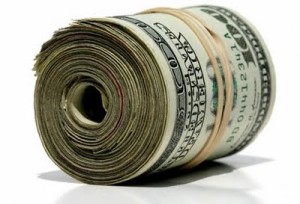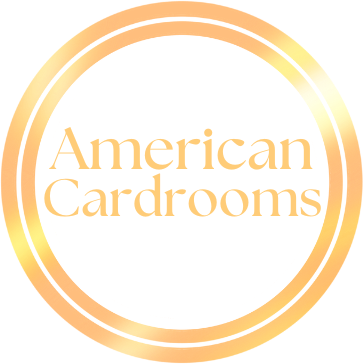
Contents
Back in the days of my youth, I would at times make a point of being the fastest driver on the road. Now, I wasn’t really reckless, but if I looked in my rearview mirror and saw a maniac barreling down the road trying to pass me, I might have taken it a little personally. My attitude was, “Oh, yeah? You wanna pass me?”
But, I learned a few sobering things in traffic school about accidents, and after a while, I started to figure out that the most important thing is not to be the fastest driver on the road, but to get to where I am going — safely.
I mean, really — what’s the rush? Is it really worth constantly pushing the limits of safety to shave an hour off what would otherwise be a 10-hour trip? Does it actually mean anything to be the fastest driver on the road?
I don’t think so.
Similarly, a lot of poker players — particularly younger, highly impressionable players — have an overwhelming need to jump into the biggest games they can find as quickly as possible, whether or not they can afford to actually play in these games. Some players simply have gambling problems, but for most of us, it typically comes down to just ego.
Manage Your Bankroll and Ego
Let’s say that you are a pretty successful $2-$5 no-limit hold’em player with a $10,000 bankroll who is looking to pick up pot-limit Omaha (PLO). There is no $1-$2 blinds, $5 bring-in PLO game ($500 max) in your town, so you decide to sit down and take a shot in the uncapped $2-$5 PLO game with a $2,500 average stack size. The straddle is always out in this game; it is usually $50 or $60 to see the flop, and sometimes $100 or $200.
Your bankroll is horribly small for this game, but you have no idea, because “$2-$5 is $2-$5,” and you take a shot anyway. You also have no idea how to play PLO. You have a lot of success and win your first four sessions, booking a couple of $4,000 wins in the process. The next thing you know, you are sitting on a $20,000 bankroll.
You start to get cocky. You raise before the flop every hand, building big pots preflop. You hit every flop, make every draw, and catch that one-outer in a $10,000 pot, because that is what is supposed to happen when you are this good.
A few sessions later, you are sitting on a $40,000 bankroll. You still are not adequately bankrolled for this uncapped $2-$5 PLO game, but Jeff Hwang’s bankroll requirements don’t apply to you, because you are different.
Check Yourself Before Your Wreck Yourself
Then, you start losing. You take those inevitable hits, but you don’t stop raising every hand; a few sessions later, you are back down to $20,000. Your friends tell you to slow down, but you can’t do it because this is your game. You say that the past few sessions — the losing ones — are anomalies, and that the $4,000 wins you started with are the norm.
At this point, as you should have done many times before, you probably ought to slow down and play smaller games and build your bankroll gradually.
“I’m a $2-$5 PLO player,” you say. “I can’t go back.”
You see, the problem is that you aren’t a $2-$5 player, because you aren’t even really bankrolled to play $2-$5 with a $1,000 max buy-in, much less $2-$5 uncapped with $2,500 stacks! And whether or not you can beat the game at these stakes is irrelevant if you don’t have the bankroll to support it. What concerns a lot of players — particularly professionals, aspiring or otherwise — is what it will look like to their peers if they are spotted playing in smaller games. However, your image is the least of your worries, because if you continue to play at these stakes, you are putting yourself on a path to ruin.
So, you don’t stop. Unfortunately, you keep losing, and a few sessions later, your bankroll is down to $8,000 — barely enough to play $2-$5 no-limit hold’em, and not even close to what you need to play even $1-$2 blinds PLO with a $5 bring-in.
So, here is the test: Now that you’ve built your ego up, are you capable of moving down in stakes when your bankroll dictates that it needs to be done?
Now, I know what you are saying: There is no $1-$2 blinds PLO game with a $5 bring-in to play in this town! Well, that’s tough. If you really want to play in a bigger game, you need to find a game that you can afford to play (even if it’s hold’em) and build your bankroll, find someone to stake you, or supplement your play with another source of income (like a job).
Growing at Your Own Pace
You also need to be wary of your peers, because when another player constantly overplays his bankroll, he doesn’t affect just himself; oftentimes, he also puts considerable pressure on you to do the same.
After all, if you are as good as he is, shouldn’t you be playing at “his” level?
Here’s the thing: You can’t let other people dictate the games that you play, or set your goals for you. The reality is that most people — particularly those you will find in a poker room, and especially those who fancy themselves to be professional poker players (gamblers) — have no concept of money management.
Those of us who actually have a clue can respect a player who doesn’t gamble with his bankroll.
The bottom line is this: Rather than make a point of sitting in the biggest and toughest games you can find, it is generally better to move up slowly and play within the confines of your bankroll. In doing so, you can save yourself from the problem of inflating your ego before you are ready to support it.
Take your time, and be patient. Don’t let anyone else project their goals onto you, either. It is hard enough not to do it to yourself; if your peers are speeding past reasonable bankroll parameters, don’t let them take you down with them. If you want to play in the bigger games and have the skills to play in them, you eventually will get there.
Nowadays when I am on the road, if I spot a maniac coming up behind me, I simply change lanes and let him pass. I figure that if he wants to die in a fiery crash, that’s his business.
Leave a Review
Submit your review | |





